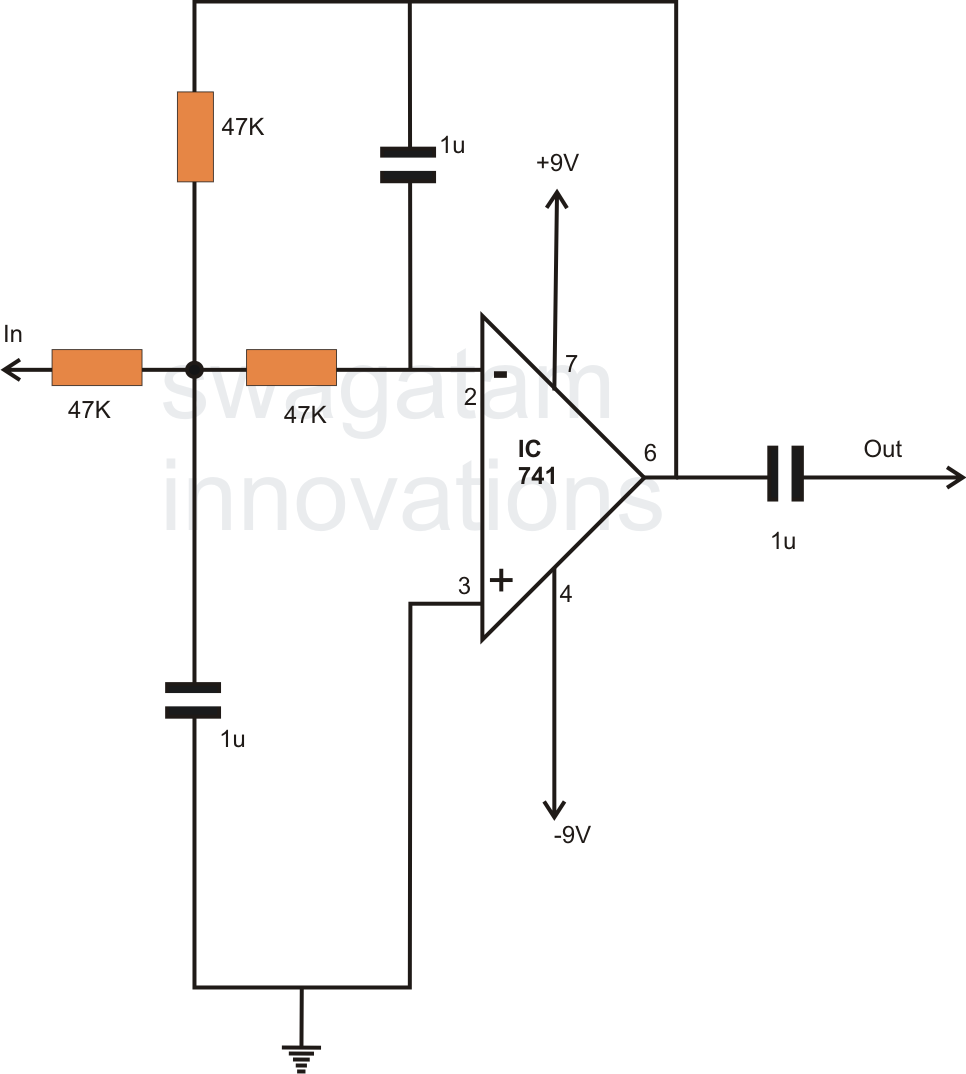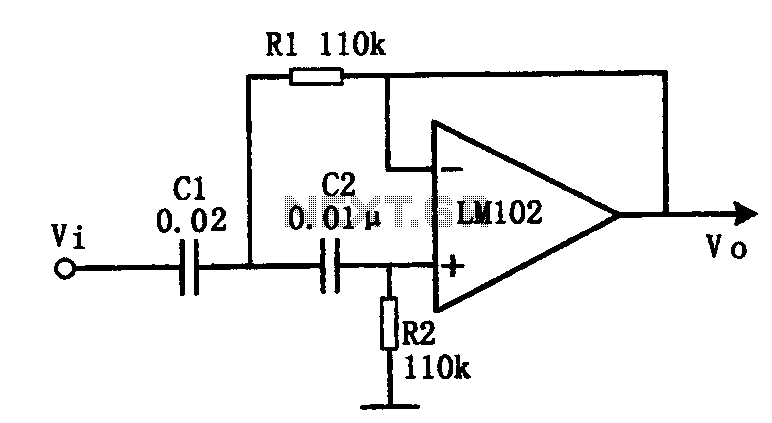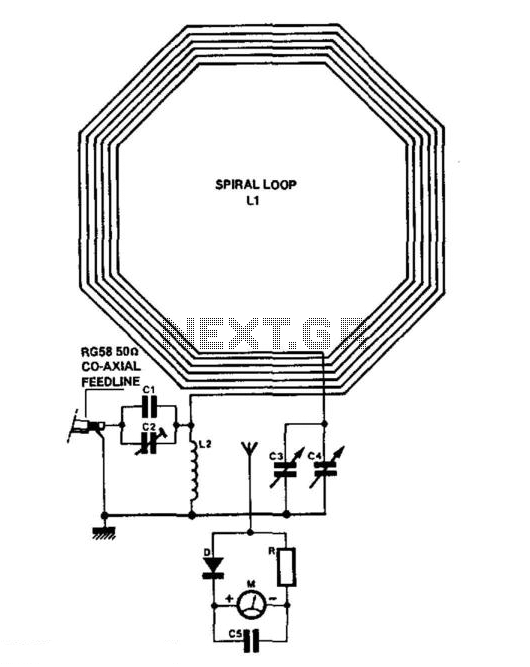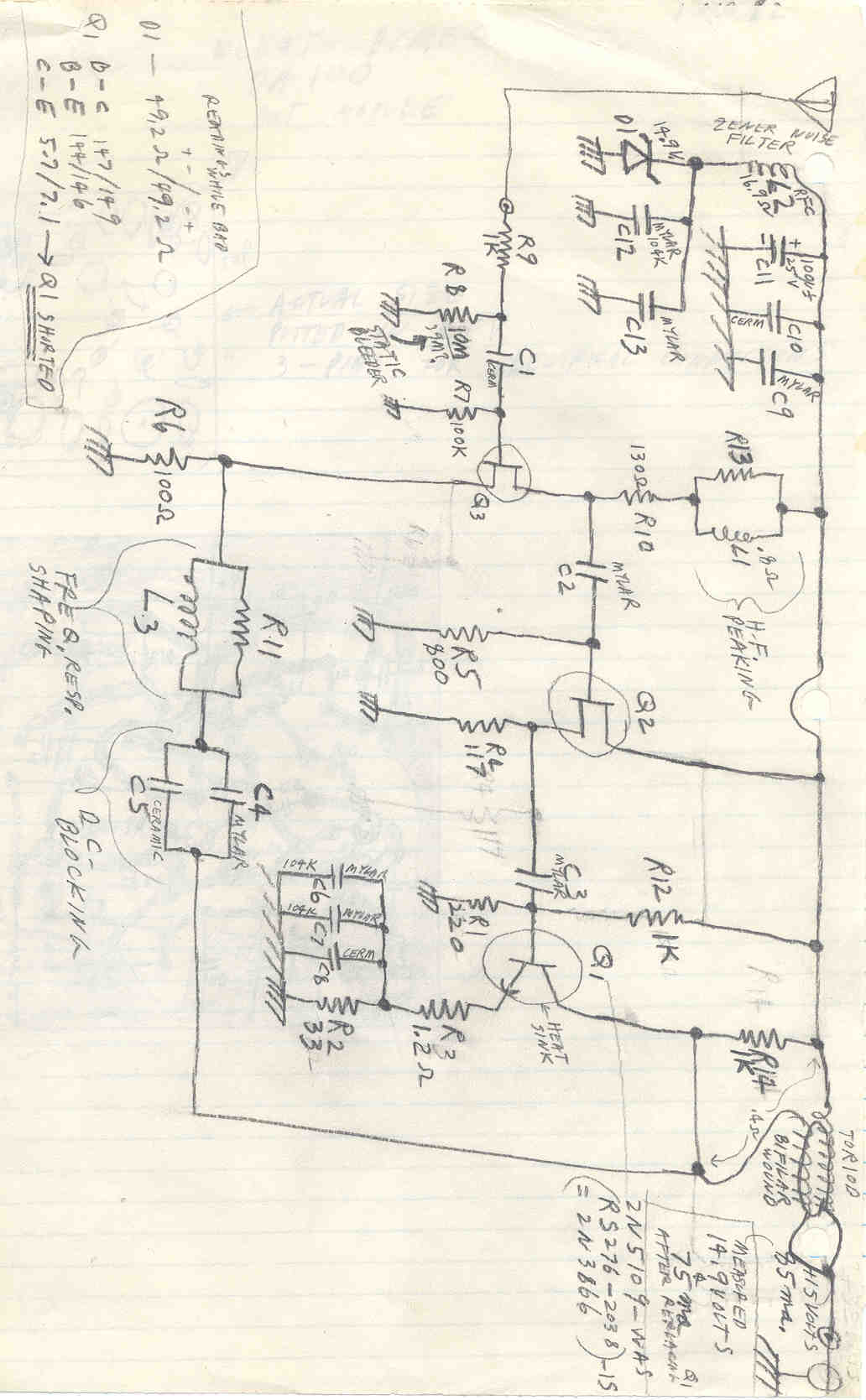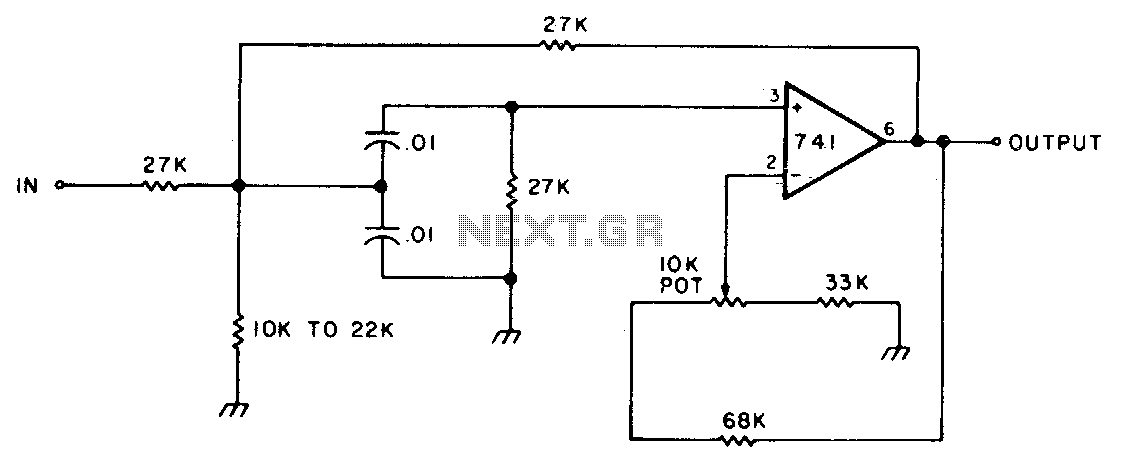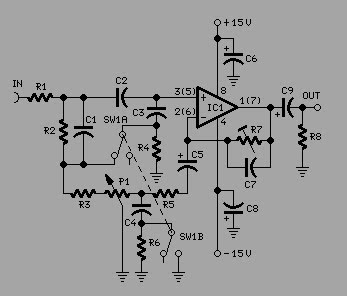
AM/FM/SW active antenna
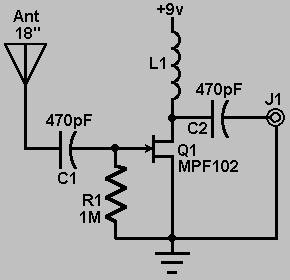
This circuit shows an active antenna that can be used for AM, FM, and shortwave (SW). On the shortwave band, this active antenna is comparable to a 20 to 30-foot wire antenna. This circuit is designed to be used on receivers that use untuned wire antennas, such as inexpensive units and car radios. L1 can be selected for the application. A 470uH coil works on lower frequencies (AM). For shortwave, try a 20uH coil. The unit can be powered by a 9-volt battery. If a power supply is used, bypass the power supply with a 0.04uF capacitor to prevent noise pickup. The antenna used on this circuit is a standard 18" telescoping type.
The active antenna circuit described is intended to enhance the reception capabilities of AM, FM, and shortwave signals, making it particularly useful for portable and low-cost radio receivers. The design incorporates a variable inductor (L1) that allows for tuning to different frequency bands, with specific inductance values suggested for optimal performance. A 470µH inductor is recommended for AM frequencies, while a 20µH inductor is suitable for shortwave reception.
The circuit is powered by a 9-volt battery, which provides the necessary voltage for operation. In scenarios where an external power supply is used, it is critical to include a 0.04µF capacitor in parallel with the power supply connection. This capacitor acts as a bypass, filtering out high-frequency noise that could interfere with signal clarity.
The antenna utilized in this setup is a standard 18-inch telescoping type, which is effective for capturing a wide range of radio frequencies. The compact nature of the telescoping antenna makes it ideal for portable applications, allowing users to extend or retract the antenna based on their reception needs. Overall, this active antenna circuit presents a practical solution for enhancing radio reception across multiple frequency bands.This circuit shows an active antenna that can be used for AM, FM, and shortwave (SW). On the shortwave band this active antenna is comparable to a 20 to 30 foot wire antenna. This circuit is designed to be used on receivers that use untuned wire antennas, such as inexpensive units and car radios. L1 can be selected for the application. A 470uH coil works on lower frequencies ( AM ). For shortwave, try a 20uH coil. The unit can be powered by a 9 volt battery. If a power supply is used, bypass the power supply with a .04uF capacitor to prevent noise pickup. The antenna used on this circuit is a standard 18" telescoping type. 🔗 External reference
The active antenna circuit described is intended to enhance the reception capabilities of AM, FM, and shortwave signals, making it particularly useful for portable and low-cost radio receivers. The design incorporates a variable inductor (L1) that allows for tuning to different frequency bands, with specific inductance values suggested for optimal performance. A 470µH inductor is recommended for AM frequencies, while a 20µH inductor is suitable for shortwave reception.
The circuit is powered by a 9-volt battery, which provides the necessary voltage for operation. In scenarios where an external power supply is used, it is critical to include a 0.04µF capacitor in parallel with the power supply connection. This capacitor acts as a bypass, filtering out high-frequency noise that could interfere with signal clarity.
The antenna utilized in this setup is a standard 18-inch telescoping type, which is effective for capturing a wide range of radio frequencies. The compact nature of the telescoping antenna makes it ideal for portable applications, allowing users to extend or retract the antenna based on their reception needs. Overall, this active antenna circuit presents a practical solution for enhancing radio reception across multiple frequency bands.This circuit shows an active antenna that can be used for AM, FM, and shortwave (SW). On the shortwave band this active antenna is comparable to a 20 to 30 foot wire antenna. This circuit is designed to be used on receivers that use untuned wire antennas, such as inexpensive units and car radios. L1 can be selected for the application. A 470uH coil works on lower frequencies ( AM ). For shortwave, try a 20uH coil. The unit can be powered by a 9 volt battery. If a power supply is used, bypass the power supply with a .04uF capacitor to prevent noise pickup. The antenna used on this circuit is a standard 18" telescoping type. 🔗 External reference
